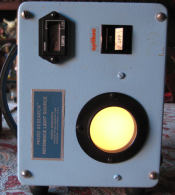I'm getting different reading for flash measurements in reflected and incident modes.
I use an old Lunasix F, in flash mode. I use a manual flash too (Mecablitz 36 C2).
I never used a flashmeter before, until very reciently.
The first tests I've done were against a wall, at different distances (ranging form 1,5 to 3,5 meters).
Flash is pointing at 0º, towards the front.
When I measure in reflected mode, the readings seem to be about right (according to flash guide number and estimated aperture, given in a scale at the back of the flash unit).
When I measure in incident mode (putting the meter's diffuser dome in place) I get like 2 stops lower f-number, meaning that the meter detects much less light power.
Does it make sense?
Could I be doing something wrong?
Thank you
I use an old Lunasix F, in flash mode. I use a manual flash too (Mecablitz 36 C2).
I never used a flashmeter before, until very reciently.
The first tests I've done were against a wall, at different distances (ranging form 1,5 to 3,5 meters).
Flash is pointing at 0º, towards the front.
When I measure in reflected mode, the readings seem to be about right (according to flash guide number and estimated aperture, given in a scale at the back of the flash unit).
When I measure in incident mode (putting the meter's diffuser dome in place) I get like 2 stops lower f-number, meaning that the meter detects much less light power.
Does it make sense?
Could I be doing something wrong?
Thank you












